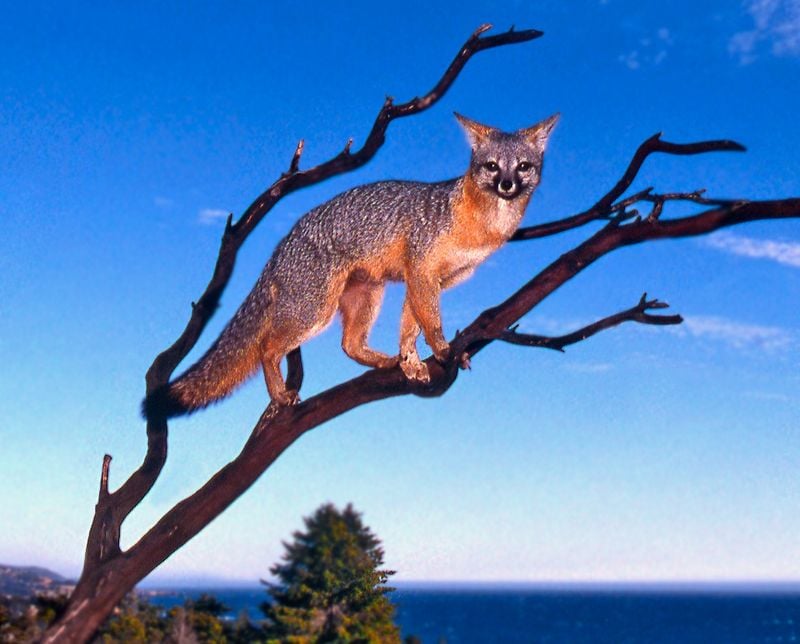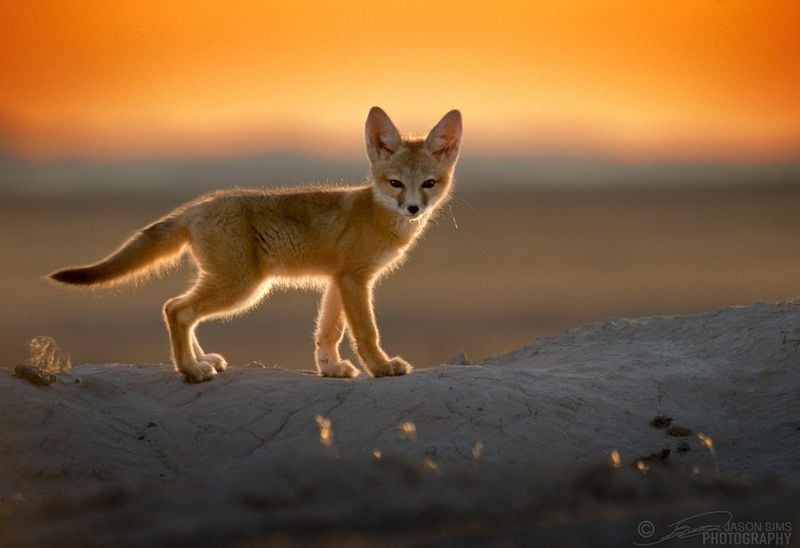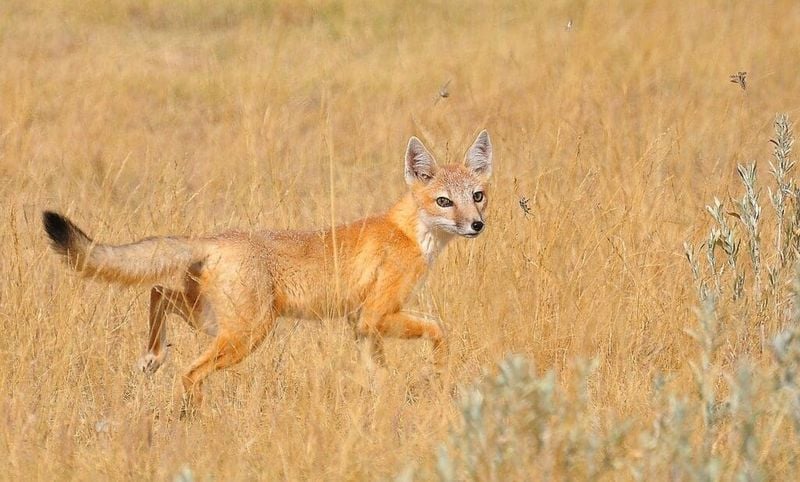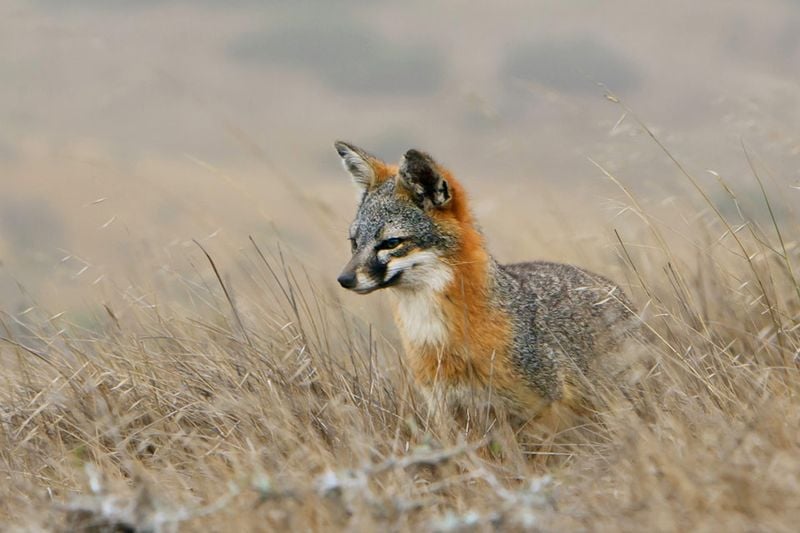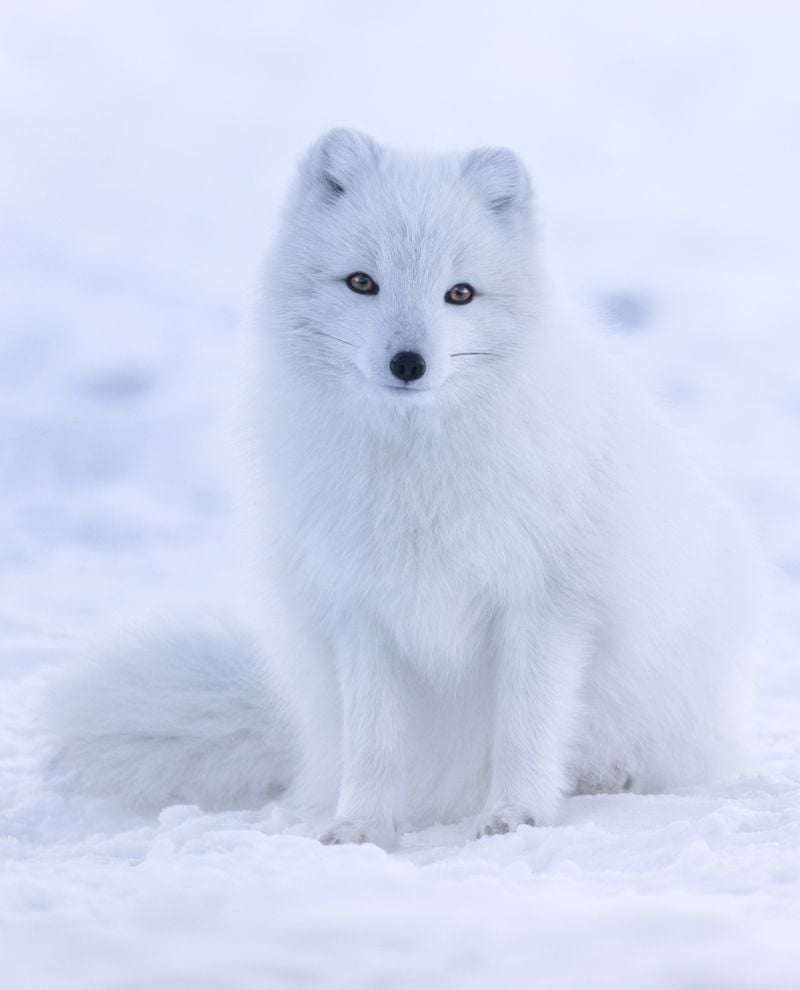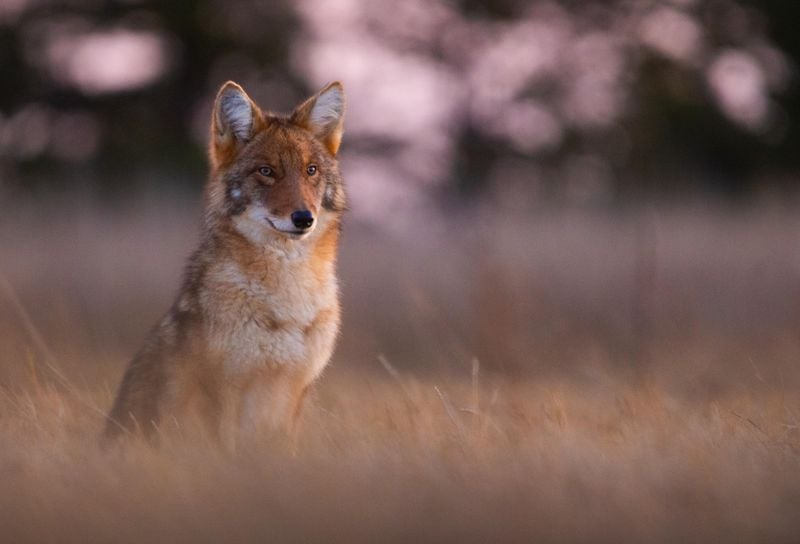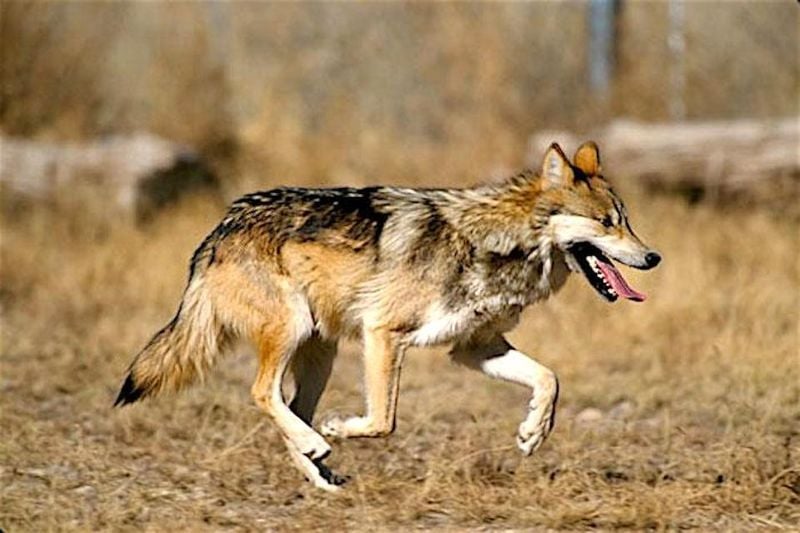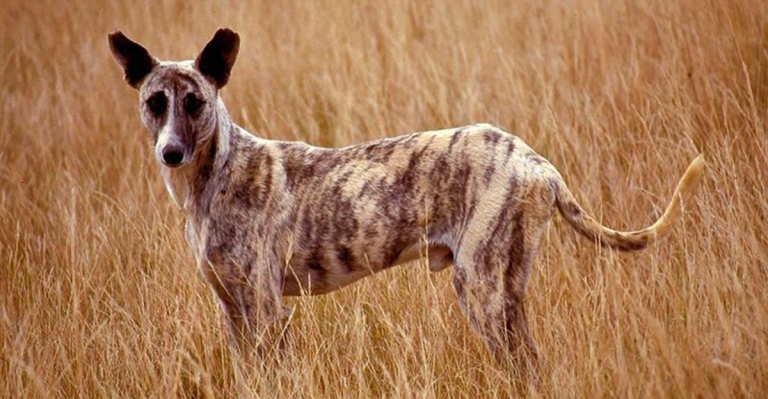13 Wild Dogs Roaming North America That Aren’t Wolves (But Are Just as Fierce)
When we think of wild dogs in North America, the gray wolf usually steals the spotlight. But beyond the howling packs of wolves, there’s a fascinating lineup of other canine creatures roaming deserts, forests, mountains, and even city streets.
These aren’t your average mutts either—they’re skilled hunters, clever survivors, and some are so rare you’ve probably never even heard of them.
From the red fox with its fiery coat to the tree-climbing gray fox and the desert-loving kit fox, North America is home to an impressive variety of wild canids.
Some are elusive and solitary, like the swift fox darting across the Great Plains. Others are expanding their range right under our noses, adapting to urban environments and changing ecosystems with surprising ease.
And not all of these wild dogs fit neatly into the boxes we expect. Take the eastern coyote—a mix of coyote, wolf, and dog—or the Carolina Dog, a feral breed with ancient roots tracing back to early human migrations.
These canines blur the lines between wild and domestic, native and introduced, predator and scavenger. They howl, yip, bark, and sing across the continent, each one playing a unique role in its ecosystem.
Whether it’s the Arctic fox enduring brutal cold or the island fox surviving on tiny stretches of land off California’s coast, these animals are marvels of adaptation and resilience.
So if you thought wolves were the only wild dogs worth knowing about in North America, think again. There’s a whole cast of fur-covered, sharp-toothed underdogs out there—some thriving, some endangered, but all undeniably wild.
Let’s dive into the lesser-known but equally captivating members of North America’s wild dog family. You’ll be amazed at who’s lurking in the shadows, howling at the moon, and sneaking through the brush right in our backyard.
1. Coyote (Canis latrans)
Among the formidable inhabitants of North America, coyotes stand out for their adaptability and intelligence. Despite their reputation as nuisances to farmers, these keen-eyed creatures are key players in maintaining ecological balance.
Whether trotting through arid deserts or sneaking through bustling urban areas, their presence is constant.
The coyote’s haunting howls create an iconic soundscape of the wilderness. These vocalizations communicate with their family members scattered across vast territories.
Interestingly, their diet includes everything from small rodents to leftover scraps, making them true survivalists.
With fur ranging from gray to rust, their appearance is as varied as their habitats. Coyotes often form loose family groups, cooperating to raise young and defend against threats.
Their uncanny ability to thrive amidst human expansion illustrates their resilience and cunning nature.
2. Red Fox (Vulpes vulpes)
With their vibrant orange coats and bushy tails, red foxes are among the most recognizable canids in North America. They thrive in diverse environments, from rural woodlands to suburban backyards, demonstrating remarkable adaptability.
Red foxes are skilled hunters, employing stealth and patience to capture prey. Small mammals like rabbits and voles are common targets, but they won’t shy away from scavenging when necessary.
Their playful antics, especially during the spring, offer a glimpse into their lively personalities.
Despite their charming appearance, red foxes are solitary animals, coming together only during mating season.
A mother fox, or vixen, raises her kits with meticulous care, teaching them the intricacies of survival in a complex world. Their ability to live close to humans yet remain enigmatic adds to their allure.
3. Gray Fox (Urocyon cinereoargenteus)
The gray fox is a remarkable creature, distinct for its unique ability to climb trees. This skill sets it apart from other canids and allows it to escape predators and forage for food high above the ground.
Preferring wooded and brushy environments, gray foxes are nocturnal hunters. Their diet is varied, including fruits, small mammals, and insects, which they hunt with stealth and precision.
Their salt-and-pepper fur provides excellent camouflage against the forest floor.
Solitary by nature, these foxes are elusive and rarely seen by humans. They form monogamous pairs, raising their young in dens hidden beneath dense foliage.
The gray fox’s ability to navigate both ground and treetops with ease makes it a fascinating subject for wildlife enthusiasts.
4. Kit Fox (Vulpes macrotis)
In the sprawling deserts of North America, the kit fox reigns supreme with its oversized ears and slender frame. These adaptations help dissipate heat and blend seamlessly into arid landscapes, making them quintessential desert dwellers.
Kit foxes are primarily nocturnal, avoiding the harsh desert sun. They emerge at dusk to hunt small prey like rodents and insects, relying on their acute hearing to detect movement in the dark.
Their dens, often shared with multiple generations, offer refuge from extreme temperatures.
Despite their secretive nature, kit foxes are social animals, communicating with soft yips and body language. Their ability to thrive in such a challenging environment is a testament to their resilience and ingenuity.
Observing a kit fox in its natural habitat is a rare and rewarding experience.
5. Swift Fox (Vulpes velox)
Swift foxes are native to the Great Plains of North America, where they dash through tall grasses with remarkable speed and agility.
These petite foxes were once on the brink of extinction but have made a heartening recovery thanks to conservation efforts.
Living up to their name, swift foxes can sprint at incredible speeds to escape predators. They are primarily nocturnal, hunting small mammals and insects under the cover of night.
Their tawny coats provide perfect camouflage against the prairie landscape.
These foxes form strong monogamous bonds, often staying with the same mate for life. They raise their young in burrows, teaching them the skills necessary to navigate the vast plains.
The swift fox’s resurgence is a testament to the resilience of nature when given a chance.
6. Island Fox (Urocyon littoralis)
Exclusive to California’s Channel Islands, the tiny island fox is a marvel of evolution, having adapted to its isolated environment. About the size of a housecat, these foxes are among the smallest canids in the world and exhibit unique characteristics.
Island foxes are diurnal, which is unusual for foxes, and they spend their days foraging for fruit, insects, and small animals. Their curious nature often brings them into contact with researchers and visitors to the islands.
Conservation efforts have been crucial in bringing the island fox back from the brink of extinction. They now enjoy a stable population, a success story in wildlife preservation.
Encountering an island fox in its natural habitat offers a glimpse into the delicate balance of island ecosystems.
7. Arctic Fox (Vulpes lagopus)
In the frigid expanses of the Arctic, the Arctic fox is a true master of adaptation. With its thick, white winter coat, it blends seamlessly into snowy landscapes, a vital camouflage in the tundra.
These foxes are resourceful scavengers, often trailing polar bears to feast on leftover kills. During harsh winters, their diet expands to include anything from small mammals to birds and even berries. Their remarkable fur changes color with the seasons, turning brown in the summer to match the tundra’s hues.
Arctic foxes are known for their playful behavior, often seen frolicking in the snow. They form monogamous pairs and raise their young in dens dug into the permafrost. Witnessing an Arctic fox against the stark white backdrop is an unforgettable sight.
8. Maned Wolf (Chrysocyon brachyurus)
The maned wolf, with its long legs and striking mane, is an enigmatic figure shrouded in mystery. While native to South America, rare sightings near the southern border of Texas have sparked intrigue among wildlife enthusiasts.
Unlike most canids, the maned wolf’s diet is heavily plant-based, consisting of fruits and vegetables, along with small mammals. Its unique appearance and solitary nature add to its mystique, as does its elusive presence in North America.
Standing at almost three feet tall, these wolves are often mistaken for a fox on stilts. They are mostly solitary, coming together only briefly to mate.
Sightings of the maned wolf are rare, making each encounter a cherished memory for those lucky enough to witness one.
9. Eastern Coyote (Canis latrans var.)
The eastern coyote is a fascinating hybrid, resulting from the mingling of western coyotes, wolves, and domestic dogs. This blend has resulted in a larger, more robust canid that roams the woodlands of the eastern United States.
Eastern coyotes are adaptable and versatile hunters. Their diet is diverse, including deer, rodents, and even fruits. Their howls echo through forested areas, a haunting melody that marks their territory.
These coyotes are known for their intelligence and cunning. They can form packs, though they often hunt alone or in pairs.
The eastern coyote’s ability to thrive in both rural and urban landscapes speaks to its resilience and adaptability. Observing these creatures in the wild is a testament to nature’s ingenuity.
10. New Guinea Singing Dog (Canis hallstromi)
The New Guinea Singing Dog is a rare and captivating creature, known for its melodic vocalizations that set it apart from other canids.
While not native to North America, small feral populations have been established from escaped or released exotic pets.
These dogs are elusive, preferring remote, forested areas where they can roam undisturbed. Their diet is similar to that of other wild dogs, consisting of small mammals and birds.
Their unique vocalizations, which range from howls to harmonic growls, have fascinated researchers and animal lovers alike.
New Guinea Singing Dogs are small, with a sleek, reddish coat. They are independent and intelligent, traits that have helped them adapt to various environments. Hearing their eerie songs in the wild is a hauntingly beautiful experience.
11. Carolina Dog (Canis familiaris)
Often referred to as the “American Dingo,” the Carolina Dog is a unique breed that roams the southeastern United States. These dogs are believed to have descended from ancient dogs brought to the continent by early humans.
Carolina Dogs are well-suited to their environment, with a keen sense of smell and a strong survival instinct.
They are often seen in wooded areas, where they hunt small game and forage for food. Their tan coats provide excellent camouflage against the forest floor.
These dogs are known for their loyalty and intelligence. They often form packs, working together to navigate the challenges of the wild.
Encountering a Carolina Dog in its natural habitat is like stepping back in time, witnessing a living piece of history.
12. Mexican Gray Wolf Hybrid (Canis lupus baileyi × Canis latrans)
The Mexican Gray Wolf Hybrid is a compelling example of nature’s complexity, blending wolf and coyote DNA to create a distinct canid. These hybrids inhabit rugged terrains, exhibiting unique behaviors and adaptations.
While wolf DNA is present, their smaller size and differing habits set them apart from pure wolves.
They are social animals, often forming packs that help them secure food and raise young. Their howls are a blend of both ancestral calls, creating a unique sound.
These hybrids are intelligent and have adapted to a variety of environments, from forests to open plains.
Their survival depends on their ability to navigate human-impacted areas, showcasing their resilience. Observing them in their diverse habitats offers valuable insights into the adaptive nature of canids.
13. Dhole (Cuon alpinus)
The dhole, or Asiatic wild dog, carries an air of mystique when mentioned in North American wildlife discussions. Though there are no confirmed wild populations, anecdotal sightings suggest that exotic releases may have led to their presence.
Dholes are known for their striking reddish coats and pack-oriented behavior. They hunt in groups, showing incredible teamwork and strategy when pursuing prey. Their vocalizations are unique, consisting of a range of whistles, screams, and clucks.
The idea of dholes roaming North American forests adds an element of exotic allure and mystery. Their presence, whether myth or reality, captivates the imagination and highlights the potential for unexpected wildlife encounters.
Spotting a dhole would be a surreal experience, blending the familiar with the exotic.



